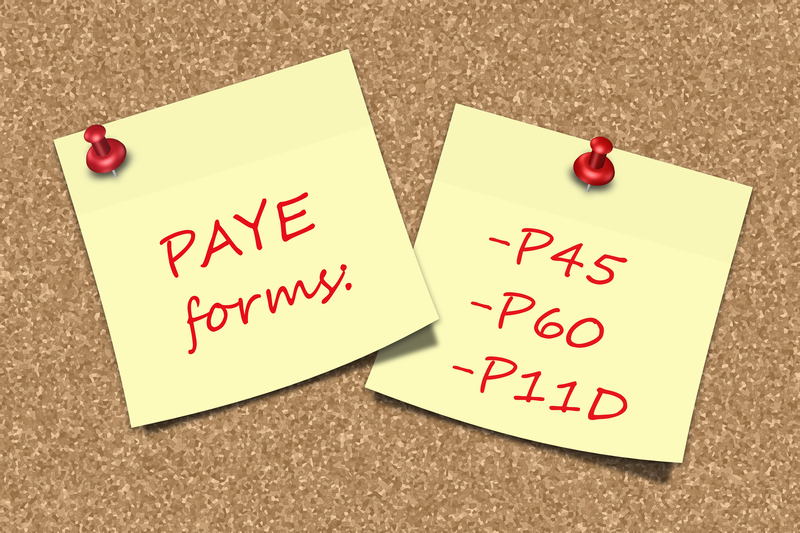Packing Solutions for a Worry-Free House Move
Posted on 18/05/2025
Packing Solutions for a Worry-Free House Move
Planning a house move can be an overwhelming experience, but with the right packing solutions, you can ensure a smooth and worry-free relocation. Careful organization and suitable packing materials are essential for protecting your belongings and reducing the stress of moving day. In this comprehensive guide, you'll discover expert advice and proven strategies to make your transition as smooth and efficient as possible.

Why Effective Packing is Crucial for House Moves
Packing for a house move isn't merely about putting things in boxes. It's about safeguarding your memories, valuable possessions, and everyday items from damage during transit. Well-structured packing ensures:
- Minimized risk of breakage or loss
- Efficient use of time and resources
- Streamlined unpacking process at your new home
- Reduced stress and uncertainty on moving day
Top Packing Solutions for a Smooth Home Move
1. Start with a Strategic Packing Plan
Before diving into boxes and bubble wrap, step back and create a *comprehensive packing plan*. Here's how:
- Declutter first: Go through each room and remove anything you no longer need. Donate, sell, or recycle these items to lighten your moving load.
- Inventory your belongings: Make a detailed list of items to help with box labeling and insurance purposes.
- Develop a packing schedule: Allocate specific days for each area of your home to avoid last-minute chaos.
2. Choose Quality Packing Materials
Investing in the right supplies is crucial. Consider these packing materials:
- Sturdy moving boxes in various sizes
- Bubble wrap, packing peanuts, and foam sheets for delicate items
- Stretch wrap to secure furniture and keep drawers closed
- Packing tape and tape dispensers for reinforcement
- Markers and labels for identifying box contents and destinations
- Wardrobe boxes for easy clothing transport
- Plastic bins for long-term storage and extra protection
3. Room-by-Room Packing Solutions
Adopt a systematic approach by packing one room at a time. Here are specific tips for each key area:
-
Kitchen:
- Wrap glasses and dishes individually with packing paper or bubble wrap.
- Use dividers for stemware and fragile dishes.
- Pack pots and pans together, nesting smaller items inside larger ones to save space.
-
Bedrooms:
- Pack off-season clothing first in wardrobe boxes or suitcases.
- Use vacuum-seal bags for bedding and linens to save space.
- Disassemble furniture if possible, and store screws and hardware in labeled bags attached to the furniture.
-
Living Room:
- Protect electronics in their original boxes if available. Otherwise, use anti-static bubble wrap and sturdy boxes.
- Cushion corners of artwork and mirrors, then wrap them in blankets or bulky towels.
-
Bathrooms:
- Dispose of expired medications and products.
- Pack toiletries in sealable plastic bags to prevent leaks.
4. Packing Solutions for Fragile and Valuable Items
High-value and delicate items require extra care. Try these secure packing solutions:
- Use specialty boxes for TVs, artwork, and wine glasses.
- Double-box valuables (place a smaller box inside a larger, well-padded one).
- Label boxes with "FRAGILE" and "This Side Up".
- Consider insuring heirlooms and high-value electronics during the move.
5. Eco-Friendly Packing Options
Green packing solutions can benefit both the environment and your pocket. Opt for:
- Recycled boxes from local retailers or online groups
- Reusable plastic containers
- Biodegradable packing peanuts
- Old towels, sheets, or clothing to wrap delicate items
- Rentable moving boxes from eco-conscious companies
Expert Tips for Efficient and Worry-Free Packing
- Label every box: Include contents, room, and if it's fragile. Colored stickers can speed up identification.
- Leave essentials unpacked: Prepare a moving day kit with personal documents, chargers, snacks, and toiletries.
- Don't overload boxes: Keep box weight under 50 lbs (22 kg) to prevent injuries and box breakage.
- Seal boxes securely with cross-taped ends for added strength.
- Take photos of electronics set-ups to simplify reassembly later.
Hiring Professional Packing Services: Are They Worth It?
If your schedule is tight or you're moving high-value items, professional packing services for house moves can offer peace of mind. These experts:
- Bring all necessary packing materials
- Know the best packing techniques to prevent damage
- Offer insurance coverage for belongings
- Save you time and significantly reduce moving stress
Tip: Compare several local providers, read online reviews, and clarify what's included in their quotes to find the most suitable service.
DIY Packing Versus Full-Service Packing Solutions
| DIY Packing | Full-Service Packing |
|---|---|
|
|
Checklist: Packing Solutions for a Hassle-Free Move
- Gather all packing supplies before you start.
- Set aside valuables and essentials you'll need during the move.
- Pack non-essentials and out-of-season items first.
- Clearly label every box with its contents and destination room.
- Use heavy-duty boxes for books and fragile items.
- Wrap each item individually for maximum protection.
- Don't leave empty spaces in boxes - fill gaps with paper or towels.
- Communicate with your movers about any special requirements.
- Double-check each room before sealing boxes and moving out.
Making Unpacking Easier: Proactive Packing Tips
Efficient packing isn't just about moving out; it's also about an easy move-in process. Here's how you can make unpacking in your new home a breeze:
- Color-code or number your boxes and keep a master list for quick reference.
- Group boxes by room and ensure they're unloaded together to avoid post-move chaos.
- Prioritize boxes with essentials so you can settle in comfortably on your first day.
- Assemble furniture and set up beds first, then focus on the kitchen and bathrooms.
Common Packing Mistakes and How to Avoid Them
Even experienced movers can fall into common traps. Here are critical errors to avoid for a worry-free house relocation:
- Poor box labeling: Always include room and contents; don't rely on your memory.
- Packing hazardous materials: Movers often won't transport items like paint, chemicals, or flammable goods.
- Forgetting to measure furniture and doorways: Ensure everything will fit in the new home.
- Skimping on packing materials: Cheap tape and thin boxes can lead to costly damage.

Innovative Packing Solutions: Beyond the Basics
Modern technology and creative invention have made house moving easier than ever. Here are a few innovative packing solutions for home relocations:
- Modular moving containers: Professional-grade, weatherproof containers dropped at your home so you can load at your own pace.
- Pre-labeled and color-coded moving kits for instant organization
- Apps and online tools to catalog your belongings and keep your inventory on your smartphone
- Smart labeling tools, such as QR-codes that link to box contents lists
Final Thoughts: A Smooth Move Begins with Smart Packing
The key to a worry-free house move is combining smart planning with flexible packing solutions. Whether you opt for traditional DIY approaches or innovative services, each step you take to organize, protect, and label your belongings brings you closer to a seamless transition. Remember, careful preparation always pays off -- moving doesn't need to be stressful when you pack smarter, not harder!
Are you getting ready to move? Use these expert tips and solutions to transform your next house move from a stressful chore into a memorable and organized success.
Frequently Asked Questions about Packing Solutions for House Moves
- What are the must-have supplies for packing a house?
Sturdy boxes, strong tape, bubble wrap, packing paper, labels, and markers are essential. For specialty items, consider dish packs, wardrobe boxes, and mattress covers. - Should I hire professional packers or do it myself?
This depends on your budget, schedule, and the value of your belongings. Hiring professionals can save time and reduce stress, particularly for busy households or valuable items. - How early should I start packing?
Begin packing non-essential items at least 3-4 weeks before your move. Work systematically to prevent last-minute rushing. - How can I make unpacking easier?
Label boxes clearly, pack by room, and keep a master inventory. Place boxes with essentials and daily-use items at the top or in separate "open first" boxes.
Embrace these packing solutions for a worry-free house move and step into your new home with confidence and peace of mind!



